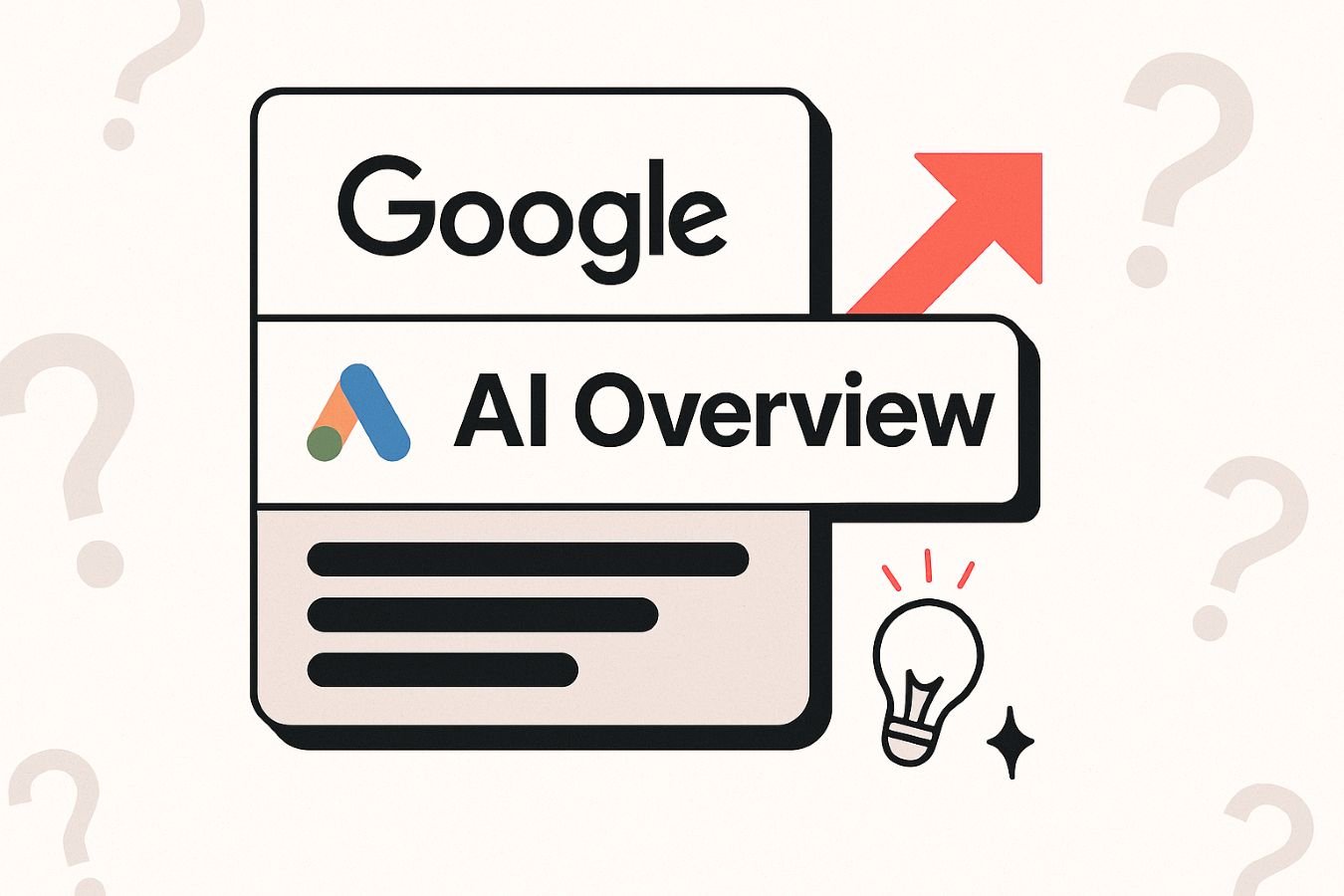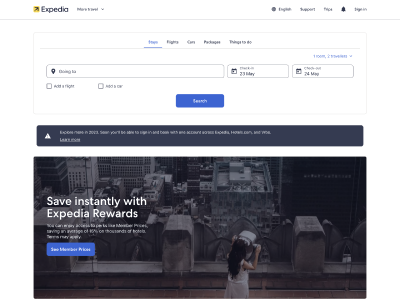For our last Data-Driven Digital community webinar, we spoke to Heather Physioc at VMLY&R about building an integrated digital powerhouse and got lessons from merging an organic, paid and content practice.
Search and other digital marketing channels can’t live in a silo – yet nearly every company struggles to break down the walls between disciplines. In order to be its most effective, search and digital teams have to collaborate successfully across paid, organic, content and more.
In this webinar recap, you’ll get tips for integrating and collaborating from the hard knocks and learnings through merging an organic, paid and performance content team into one unified Discoverability group.
Find out how VMLY&R went from three teams of individual experts to one integrated Discoverability powerhouse, and learn from their mistakes and wins as you apply the principles in your own company.
Watch the webinar recording below or read on to view the slides and get the top tips.
Building an Integrated Digital Powerhouse
Yeah, we totally collaborate!
The digital marketing industry talks a good game about collaboration but is it really happening? We may tell our clients and bosses it happens and make big claims about how “integrated” we are and we preach that our recommendations are better because we have a more “holistic” offering. But whether it’s across agencies, teams working with the same agency or in-house teams, collaboration is much harder than it looks.
The majority of the time, specialists are sucked into silos and focus solely on their own areas of expertise.
So what do we do?
VMLY&R merged with three other agencies in their network in the last three years, doubling in size and tripling their global footprint overnight. With the merge came complementary skillsets and client lists.
The merge brought up this ongoing problem we all have in any industry with silos and presented a unique opportunity to solve collaboration and content problems by bringing in the organic search, paid search and performance content teams under one unified group.
From this:
To this:
Interdisciplinarity
Interdisciplinarity is when two or more areas of expertise join forces to solve new kinds of problems together. They combine and break traditional silos to solve challenges by integrating and updating their individual approaches into a new, holistic approach. Interdisciplinarity helps with the negative effects of siloing and over-specialisation.
Interdisciplinarity is common in technical and scientific fields, including neuroscience, biochemistry and cybernetics but it’s a relatively unknown term in our industry. It shouldn’t be.
Complementarity
Don’t get confused with interdisciplinarity and complementarity. The two are quite different. For example, anyone can learn SEO or PPC online. Plenty of companies do this “complementary” search work but few are truly interdisciplinary.

True interdisciplinarity
“True interdisciplinarity is when the sum of the whole is greater than it’s parts.” People with the right experience can bring unique knowledge for a more cohesive, end-to-end offering. This work is repeatable and refinable for when similar issues arise.
Interdisciplinarity has been a driving force for us to merge teams and create something new. Now, we also consult with clients to help them with their interdisciplinarity too.
 Toughest Lessons
Toughest Lessons
From saying it to doing it
We’ve been saying we collaborate well for so long we start to believe it. It’s easy to become complacent and not try and make things better. We need to prove to our colleagues that there are more benefits to working together. With case studies, we can prove and agree on the importance of collaborating on projects together. Interdisciplinarity is a massive cultural shift and it won’t happen overnight.
Risk of becoming less agile
Larger teams make it harder to collaborate but it becomes even more important. It is easy to fall into the trap however of thinking you need to collaborate on everything or forcing adoption of one team members way of doing things. VMLY&R learned quickly that design-by-committee doesn’t work and it can’t be forced.
Interdisciplinarity means teams can fail if they’re not able to maintain identity and autonomy. While interdisciplinarity is truly important for teams, it does mean you need to keep this “connective tissue” that bonds you as a group but allow room for smaller teams to emerge to combat the challenge of getting too big to stay nimble.
Negotiating roles and defending turf
Conflict is inevitable when integrating teams and with teams of people specialising in different areas there will always be some negotiation of roles and perhaps even some turf wars. It takes extra effort for everyone to get on the same page. Blending teams is an exercise in humility to give everyone’s opinion and speciality equal weight. In order to combat this, a culture shift needs to happen where everyone wins when one team member wins.
Merging processes
Merging processes is another common challenge when merging into smaller teams. Each team will already have its own process for doing daily tasks so the team will need to be flexible in order to change. Make sure you understand everyone’s processes and reasons for having things the way they are before chopping and changing.
Change fatigue
One of the big problems with merging teams can be change fatigue. A constant stream of non-stop change makes it difficult for people to adapt and absorb all the new changes. In order to combat change fatigue, you need a culture shift of ongoing testing, learning and optimising. This way change is always expected, depended upon for growth and people get used to it. That being said, there’s always a limit to how much change people can take on without burning out.
Biggest gains
Cross-selling and up-selling

Now, most clients are using at least 2 teams if not all 3.
 Speed and scale
Speed and scale
With an integrated team, it’s easier to distribute labour across the team as there’s an amount of overlap. Having integrated digital teams helps to reduce duplication of effort. Dividing and conquering means covering more ground, more quickly, as well as sharing learnings from different specialities to deliver a better product.
Knowledge sharing
Data-sharing will become second nature to an integrated digital team and helps find opportunities. Specialists sharing and pooling their knowledge will create a culture of crowd-sourcing in your teams where no one feels pressured to be across everything. Pooling knowledge like this helps solve digital marketing challenges faster.
A holistic approach emerges
Most individual teams have individual objectives which creates a culture of “every team for themselves”. An integrated digital team will stop worrying about whose budgets and whose targets and will instead focus on whatever’s best for the company, reducing cannibalism and competition. This means companies can steer resources to where there’s the most need and what will have the biggest impact. It doesn’t matter which team or channel delivers as long as the work gets done and the goal is met.
Trust and visibility
Trust is increased when recommendations are made by more than one expert. Specialists need to talk about joint opportunities and discuss how channels perform together and separately to make the best recommendations.
New capabilities
An integrated digital team means developing new capabilities at the intersection between practices, enabling you to create and launch new, integrated services, increasing the value for your customers or clients.
How you can do it, too
Tips for integrated digital teams
Here are 12 tactical tips to create better integrated digital teams.
Announce change quickly
Team leaders should announce change quickly to their teams. Get your teams involved as soon as possible by making them informed of the changes benefits and challenges and essentially get buy-in from your team right away. Expect your team members to help instead of obstructing the change (this goes back to creating a culture of change, testing and optimisation).
Introduce and immerse immediately
Once the new change is announced, bring the teams together for action. Get specialists in the same room as early and as often as possible to start a dialogue about your vision. Brainstorm ideas to help the change along. VMLY&R’s integration sessions included introductions and ice-breakers, overarching sessions about the department and teams, capability and case study sharing and team-building exercises.

Once the new team, process or change has been established, reintroduce the team to your company and inform your colleagues on what the new team is capable and responsible for.
Implement change jointly and steadily
While you need to announce change quickly, implementing the changes should be slow and incremental. Focus on one change at a time at natural points of intersection. Give ownership of different initiatives to team members from different channels to make sure you’re involving everyone and anticipating all the angles. This will help get buy-in across different channels.
No process is precious
Your processes should be flexible. Any team member should be able to adapt them as needed. Create a “living wiki” and document your team’s processes but make sure to update and organise them regularly. Everyone on the team should be able to update the processes. Check-in periodically and remove any that no longer fit within your organisation.
Cross-train to build advocacy
Cross-train your teams to build advocacy. The intent here is not to make it so that everyone can do everyone else’s job but they can talk about them and advocate for their channels. In meetings, this will mean specialists are able to ask whether they’re including the right people in a project and who needs to be involved to produce the best outcome for the customer.
Productise service offerings
As your integrated digital teams develop new joint-services and processes, create smaller, cross-team committees to productise those offerings. To do this, they’ll need to define the service and value, identify inputs and outputs and estimate costs and timing. These should be simple service offerings or products that can then be pulled “off the shelf” when the need arises.
Recommend and report together
Integrated digital teams need to report together instead of reporting in their silos. This will help your customers make more informed and data-driven decisions. Get your team to compile and then discuss the data together, pointing out where opportunities intersect for the best possible outcome.
Monthly account strategy sessions
Yep, another meeting! While your team may not want to put another meeting on their agenda, a monthly account strategy session is a great opportunity for your team to get out of their silos and talk to each other by sharing what’s happening in the business. Discuss how the brand is performing in each channel as well as opportunities and risks. This will help bring up potential joint efforts, case studies and the like.
You can find a sample account strategy discussion guide here.
Build a networked team
As your team grows in size, geography and complexity a “networked team” model may make sense. A networked team has central sources of truth and processes (including the living wiki we talked about), however, the operations and execution are decentralised. In the networked team model, there are a set of common standards and best practices that each team member needs to follow but they can shift and adjust to deliver however necessary.
“It’s a balance of centralized control and local team empowerment.”
Create a culture of feedback
As our incredible Client Services Director, Cecilia Cebada says (a lot):
“Feedback is a gift.”
When merging separate channels into one integrated digital team immediate feedback speeds up integration. Create a culture of feedback to depersonalise the feedback and make it about the quality of your work. Peer review each other’s work and look over shared processes to make delivery better.
Market collaborative successes
Market collaborative successes to the wider team. Create case studies from your wins to demonstrate how your team works more effectively together. Find the wins that cross teams and channels and make sure the wider team, including stakeholders and bosses, hear about them to get buy-in.
Sit together whenever possible
Who you sit next to matters, whether in-person or more figuratively, online. Connect specialists from different channels as much as possible in order to uncover opportunities and risks. Make it so it’s as easy for them to communicate as possible and ask each other questions.
“Do whatever it takes to be present and engaged with people in other disciplines as much as possible.”
Big takeaways
The competitive advantage is real
True interdisciplinarity is hard to create and thus hard to replicate. The competitive advantage of having an integrated digital team is real. This advantage happens whenever a company puts in the work that their competitors can’t, don’t or won’t. Creating integrated service offerings gives you a unique point of difference and product to sell that your competitors don’t have, making you increasingly indispensable to your customers and company.
The cultural shift is worth it
The cultural shift is huge but worth it. There will be plenty of growing pains as you create more integrated digital teams and even if it doesn’t make sense to merge teams for your business, it does make sense to break down barriers and silos for different channels. As a leader of discoverability, you can create a culture of change, feedback and communication to create something entirely new.
If it were easy, everyone would do it
“Remember that competitive advantage comes from doing the work your competitors can’t, don’t, or won’t. Because if it were easy, everyone would do it.”



 Toughest Lessons
Toughest Lessons Speed and scale
Speed and scale











